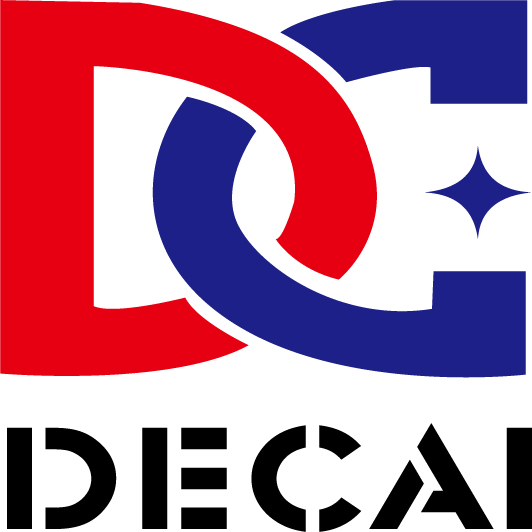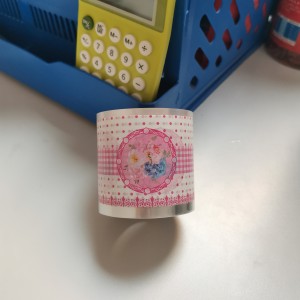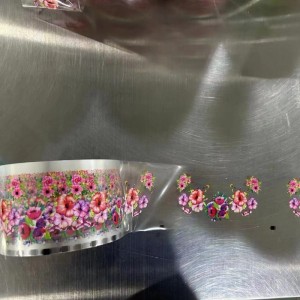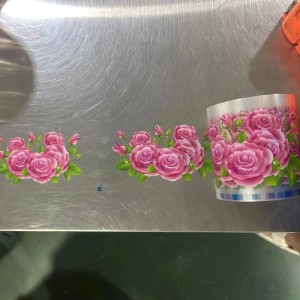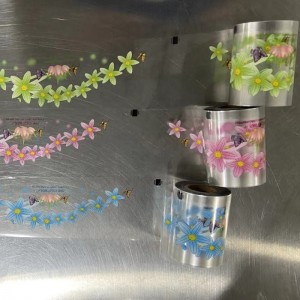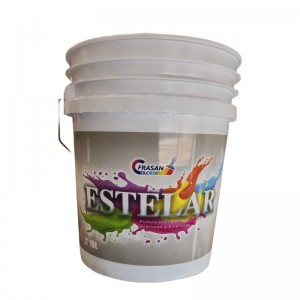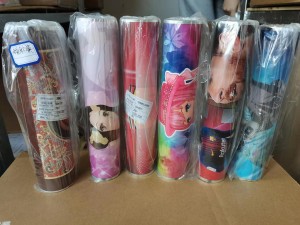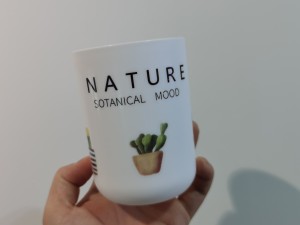Flower design heat transfer film for pp cup pp jars heat transfer decal
Product description
One of the main advantages of heat transfer film is its versatility. It can be cut into any shape or size using a vinyl cutter or plotter, allowing for intricate and detailed designs. It can also be layered to create multi-colored and multi-textured designs. Additionally, heat transfer film is durable and can withstand repeated washing and wearing without fading or peeling.
Heat transfer film is also a popular choice for DIY projects and small businesses as it is relatively easy to use and does not require expensive equipment or machinery. With just a heat press or iron, individuals can create their own customized merchandise and gifts.
In summary, heat transfer film is a versatile and durable material used in the apparel industry for customizing textiles and fabrics. Its versatility and ease-of-use make it a popular choice for both individuals and small businesses.
Product show




Production process


Heat transfer film is a popular decoration material that can be used on various surfaces, including fabrics, ceramics, and metal. The production process of heat transfer film involves several steps that ensure its quality and effectiveness. Here are the steps in the production process of heat transfer film:
Step 1: Design and Artwork Creation
The first step in the production process of heat transfer film is the design and artwork creation. Graphic designers create the artwork, which is then converted into a digital format. The artwork has to be properly aligned and sized to ensure that it fits the material onto which it will be transferred.
Step 2: Imaging and Printing
The second step of the production process is the imaging and printing. The digital artwork is printed onto a heat transfer paper, using a specialized printer which uses heat to transfer the design to the paper. This process is known as screen printing, and it ensures that the design adheres to the paper properly.
Step 3: Coating the Transfer Film
The third step is coating the transfer film. A layer of heat-activated adhesive is applied to the transfer film, which is a thin layer of plastic that is used to transfer the design from the paper to the final material. The coating is applied in a precise manner to ensure that the adhesive is evenly spread and adheres properly to the film.
Step 4: Cutting and Weeding
Once the coating is complete, the transfer film is cut into the required size and shape using a special cutting machine. The excess transfer film is then removed through a process called weeding, where the excess plastic layer is removed manually using a specialized tool. This process ensures that the design is left intact and that all the parts required are present.
Step 5: Heat Transfer and Finishing
The final step is heat transfer and finishing. The transfer film is placed onto the surface to which the design is to be transferred and heat is applied, which activates the adhesive layer. The transfer film is then peeled off, leaving the design on the surface. The final product is then inspected and trimmed to ensure that there is no excess film around the design.
In summary, the production process of heat transfer film involves design and artwork creation, imaging and printing, coating the transfer film, cutting and weeding, and heat transfer and finishing. These steps ensure that the heat transfer film is of high quality and is effective in transferring the design to the final material.
Company profile
Decai Honorise is a leading manufacturer of heating transfer field, one-stop service comprehensive enterprise. The products involves the following major aspects:High-precision hot stamping silicone rubber roller and wheel、gravure printing rubber roller and various industrial rubber rollers,Thermal transfer film labels and in-mold labeling,Heat transfer machine and hot stamping machine.Integrating production, sales and R&D together. In strict accordance with printing industry standards for production and management. We're own scientific formula, precise processing methods and superb grinding technology, we provide high-quality products with advanced production equipment and strong technical force.


Packaging&Shipping


FAQ
1.Are you a manufacturer?
2.Can you provide samples?
Yes, we can provide you samples for quality checking. Please let us know your requirements, then we can arrange samples according to your requirements. Our samples are free, but the delivery charge is on your side.
3.How can we guarantee quality?
Always a pre-production sample before mass production;Always final Inspection before shipment.
4.What is "heat transfer printing' ?
Heat transfer printing utilizes high-quality gravure printed on a clear carrier that are permanently bonded to a part by the heat and pressure of the heat transfer process. Since heat transfer label are preprinted, multicolor images are transferred to the part in one pass.
5.How to use heat transfer printing ?
1)firstly you must have a heat transfer printing machine, we also produce this machine
3) your product should have smooth surface(flat or round conical shape)
6.This is the first time to buy, what information I need to provide in order to get a price?
1)Material of your product
2)Size of the film /your product
3)do you have own orginal design?
4) Order quantity
5)If possiable pls send sample product to us7.How can we contact you as soon as possible?
We are always available on Alibaba.com, WhatsApp, Wechat. You can also reach us by email. You are welcome to send us any questions anytime and we will reply you.
